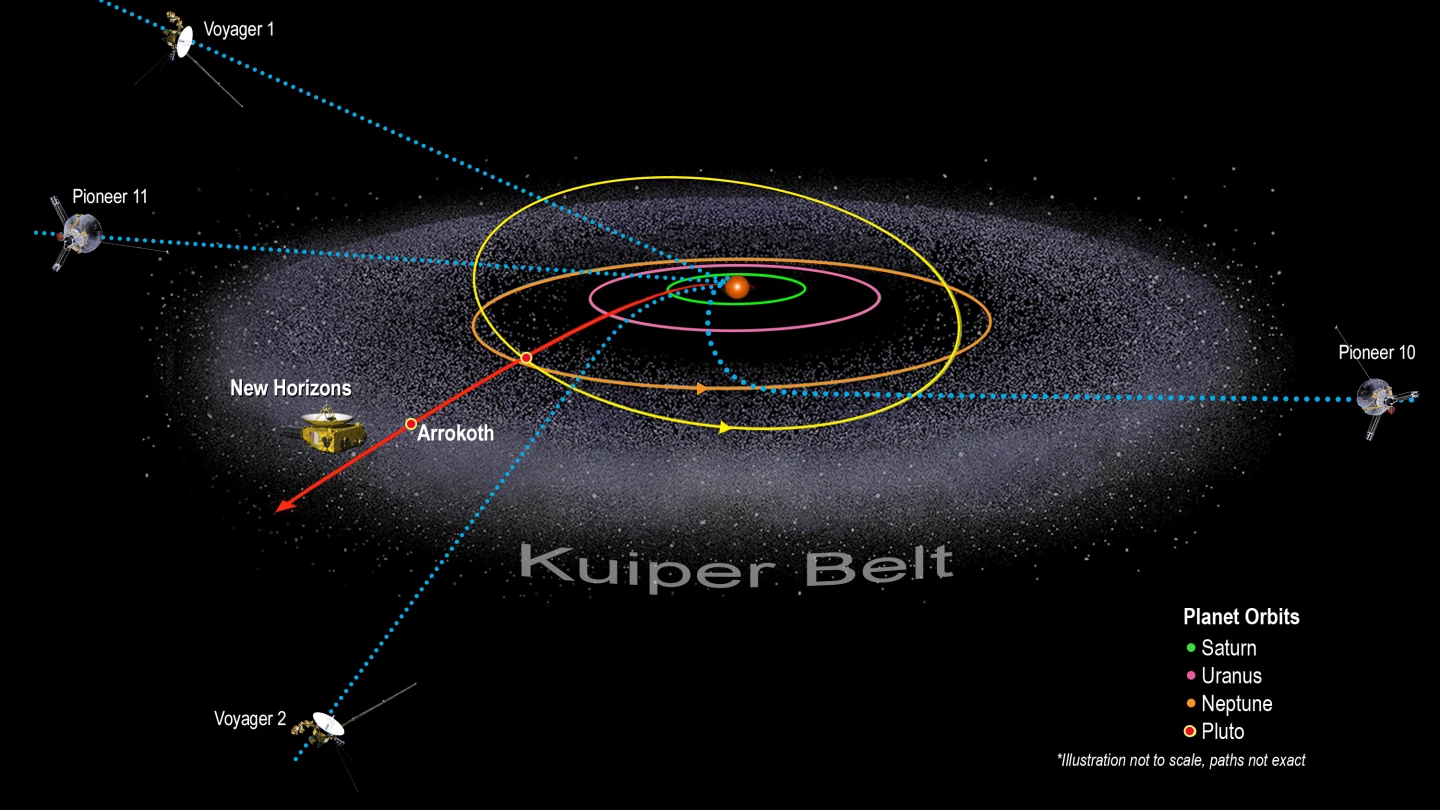NASA’s New Horizons currently has a lot of time on its hands as it coasts through vast emptiness towards interstellar space. The probe has just passed a new milestone distance on the journey, and celebrated by taking a snap of its predecessor Voyager 1 – or at least, the patch of sky where it is.
Launched in 2006, New Horizons’ primary mission was to conduct a flyby of Pluto, which it achieved in 2015 with some stunning results. It followed that up with a close pass of Kuiper Belt object Arrokoth (previously nicknamed Ultima Thule) in early 2019. While astronomers hunt for other potential flyby targets in the Kuiper Belt, the craft continues to hurtle out of the solar system.

And on April 17, New Horizons ticked over a major (albeit entirely arbitrary) milestone – 50 astronomical units (AU) from the Sun. That’s 50 times the distance between Earth and the Sun, or about 7.5 billion km (5 billion miles) away. It’s only the fifth spacecraft to travel that far, after Voyagers 1 and 2 and Pioneers 10 and 11.
To celebrate the occasion – and give the little probe something to do out there – New Horizons took a photo of Voyager 1. At a distance of more than 152 AU, Voyager 1 is currently the most distant human-made object in the universe, and was the first spacecraft to cross over into interstellar space.

In this photo, the two spacecraft are separated by an astonishing 18 billion km (11.2 billion miles). As such, you can’t actually see Voyager 1 amidst the star field, but NASA knows exactly where it is thanks to radio tracking, helpfully marking its location with a yellow circle.
While New Horizons will never catch up to Voyager 1, it will join it in interstellar space sometime in the 2040s. In the meantime, NASA is using the craft's unique perspective to measure the "blackness" of the sky and the phenomenon of stellar parallax.
Source: NASA





